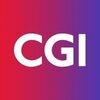


i
Infinite Computer Solutions
Filter interviews by
Infinite Computer Solutions Senior QA Lead Interview Questions and Answers for Experienced
Infinite Computer Solutions Senior QA Lead Interview Experiences for Experienced
1 interview found
I appeared for an interview in Aug 2024.
(3 Questions)
- Q1. Test NG Annotations
- Q2. TestNG parallel and cross browser testing
- Q3. Code to swap two strings
- Ans.
Code to swap two strings in an array
Create a temporary variable to store one of the strings
Assign the value of the first string to the second string
Assign the value of the temporary variable to the first string
(2 Questions)
- Q1. Explain about last project
- Ans.
Led a team in implementing automated testing for a web application
Implemented Selenium WebDriver for automated testing
Created test scripts in Java to validate functionality
Utilized Jenkins for continuous integration
Collaborated with developers to identify and resolve bugs
- Q2. Eplain POM diff btwn POM.xml and Testng.XML file
Interview Preparation Tips
Skills evaluated in this interview
What people are saying about Infinite Computer Solutions






Interview questions from similar companies

I applied via Approached by Company and was interviewed before May 2021. There were 3 interview rounds.
Short basic algorithms test
(1 Question)
- Q1. Java OOPS Concept Questions, Multithreading
(1 Question)
- Q1. Team Management Skills
Interview Preparation Tips

I applied via Naukri.com and was interviewed in Jan 2021. There were 3 interview rounds.
Interview Questionnaire
1 Question
- Q1. All basics and some advance questions of .net
Interview Preparation Tips

Technical Lead Interview Questions & Answers
Virtusa Consulting Servicesposted on 15 May 2021
I applied via Naukri.com and was interviewed in Apr 2021. There was 1 interview round.
Interview Questionnaire
1 Question
- Q1. What is your technical strength?
Interview Preparation Tips
If you do not understand the question should not predict and tell the answer. You have to prepare advanced features and explain well if your not using you can't tell I didn't use yourself make space to learn new features Java and Microservice concept.

(1 Question)
- Q1. Basic C#, Azure Cloud and API Design
(1 Question)
- Q1. Functional and non functional requirements
- Ans.
Functional requirements specify what the system should do, while non-functional requirements specify how the system should perform.
Functional requirements describe the specific behavior or functions of the system.
Non-functional requirements describe the quality attributes of the system such as performance, security, and usability.
Functional requirements are typically documented in use cases or user stories.
Non-function...

Technical Lead Interview Questions & Answers
Virtusa Consulting Servicesposted on 14 Oct 2024
(3 Questions)
- Q1. Fake Interview, Didn't expect this from virtusa
- Q2. FakeInterviews conducted, Didn;t expect this from virtusa
- Q3. Virtusa Scammers
Interview Preparation Tips
He conducted interview, If you don't know go and learn from Coursera, DeepLearning.ai
Why wasting the time of peoples, Interviewer name : Sudhakar Chigurupati


(1 Question)
- Q1. All core questions about java8 ,java,spring ,database,kafka,rabbitmq,datastructure, singleton,coding questions . Questions like how java adopted stream.. what is internally done to adopt collection to st...
Code test which i hd not attended
Interview Preparation Tips
2. They are trying to find great developers like google Facebook but with minimum package.
3. Interviewer was wasting time n asking to develop classes which will behave same as readymade java classes . coding questions was too deep n time consuming.and while doing it he was constantly disturbing ..let developer decide his logic n write the code..
4. Wastage of time..

I applied via Approached by Company and was interviewed in Nov 2022. There were 2 interview rounds.

(3 Questions)
- Q1. Basics of React Native.
- Ans. Learn the various types of components, lifecycle
- Q2. React Native thread working
- Q3. Check various available tutorials
Interview Preparation Tips

Technical Lead Interview Questions & Answers
Sutherland Global Servicesposted on 27 Dec 2024
I appeared for an interview in Jan 2024.
(2 Questions)
- Q1. Spring batch questions Questions related to asynch process
- Q2. Java 8 stream api questions
Interview Preparation Tips

I applied via Naukri.com and was interviewed in Oct 2023. There were 3 interview rounds.
(8 Questions)
- Q1. It is technical interview for screening for technical knowledge
- Q2. Explain Oops concept in .net
- Ans.
OOPs concept in .NET refers to Object-Oriented Programming principles like inheritance, encapsulation, polymorphism, and abstraction.
Inheritance: Allows a class to inherit properties and behavior from another class.
Encapsulation: Bundling data and methods that operate on the data into a single unit.
Polymorphism: Ability to present the same interface for different data types.
Abstraction: Hiding the complex implementatio...
- Q3. What is .Net core advance features
- Ans.
Some advanced features of .Net Core include cross-platform support, performance improvements, and support for modern development practices.
Cross-platform support allows developers to build and run applications on different operating systems.
Performance improvements such as faster startup times and lower memory usage.
Support for modern development practices like containerization and microservices architecture.
Built-in s...
- Q4. What is Interface vs Abstraction
- Ans.
Interface defines a contract for a class to implement, while abstraction hides the implementation details.
Interface is a blueprint of a class that defines what methods a class must implement.
Abstraction is a concept that hides the implementation details and shows only the functionality.
Interfaces can have multiple inheritance, while abstraction can be achieved using abstract classes.
Example: Interface 'Shape' may have ...
- Q5. What are extention methods
- Ans.
Extension methods are a way to add new methods to existing types without modifying the original type.
Extension methods are defined as static methods in a static class.
They must be in the same namespace as the type being extended.
They are called like instance methods on the extended type.
Example: Adding a method to the String class to reverse a string.
- Q6. Explain service life time
- Q7. What is middle tier
- Ans.
Middle tier is the layer of software that acts as a bridge between the front-end user interface and the back-end database.
Middle tier handles business logic and processing of data
It often includes application servers, web servers, and APIs
Examples include Java EE, .NET Framework, and Node.js
- Q8. What is DI and it's use
- Ans.
DI stands for Dependency Injection and is a design pattern used to increase flexibility and maintainability of code.
DI is a technique where one object supplies the dependencies of another object instead of the object creating them itself.
It helps in decoupling components, making them easier to test and reuse.
DI containers like Spring Framework in Java are used to manage dependencies and inject them into objects.
Example...
(9 Questions)
- Q1. It is for deep knowledge and knowledge of cloud and communication accessment
- Q2. Explain structure and later of current project
- Ans.
The current project is a web application for managing inventory and sales.
The project follows a MVC (Model-View-Controller) architecture
Uses technologies like React for the front-end and Node.js for the back-end
Database schema includes tables for products, customers, orders, etc.
Implemented features like user authentication, product search, and order processing
- Q3. What is your current role
- Q4. Explain Solid principles
- Ans.
SOLID principles are a set of five design principles that help make software designs more understandable, flexible, and maintainable.
Single Responsibility Principle (SRP) - A class should have only one reason to change.
Open/Closed Principle (OCP) - Software entities should be open for extension but closed for modification.
Liskov Substitution Principle (LSP) - Objects of a superclass should be replaceable with objects o...
- Q5. Explain the is IOC
- Ans.
Inversion of Control (IoC) is a design principle where the flow of control is inverted compared to traditional programming.
IoC is a design pattern where the control of flow is inverted from the traditional approach.
In IoC, the control is passed to a framework or container that manages the flow of the application.
Dependency Injection is a common implementation of IoC, where dependencies are injected into a class rather
- Q6. What is pipeline funtions
- Ans.
Pipeline functions are a series of functions or tasks that are executed in a specific order to process data or perform actions.
Pipeline functions help streamline complex processes by breaking them down into smaller, manageable tasks
Each function in the pipeline takes input from the previous function and passes output to the next function
Commonly used in data processing, automation, and software development workflows
- Q7. How to use session in .net core
- Ans.
Session in .NET Core is used to store user-specific information across multiple requests.
Use services.AddSession() in ConfigureServices method of Startup class to enable session
Use app.UseSession() in Configure method of Startup class to add session middleware
Access session data using HttpContext.Session property
Example: HttpContext.Session.SetString("UserName", "JohnDoe") to store a string in session
Example: string us...
- Q8. Explain ACID properties in DB
- Ans.
ACID properties in DB ensure data integrity and consistency
Atomicity: All operations in a transaction are completed successfully or none at all
Consistency: Data is always in a valid state before and after a transaction
Isolation: Transactions are isolated from each other until they are completed
Durability: Once a transaction is committed, changes are permanent and survive system failures
- Q9. What are diff Isolation levels
- Ans.
Isolation levels define the level of visibility a transaction has on other concurrent transactions.
Isolation levels include READ UNCOMMITTED, READ COMMITTED, REPEATABLE READ, and SERIALIZABLE.
READ UNCOMMITTED allows dirty reads, READ COMMITTED prevents dirty reads but allows non-repeatable reads, REPEATABLE READ prevents non-repeatable reads but allows phantom reads, and SERIALIZABLE prevents all anomalies.
Isolation le...
(2 Questions)
- Q1. What is sal expectation
- Ans.
Salary expectation is the amount of money a candidate expects to be paid for a specific job role.
Salary expectation is usually discussed during the job interview process.
Candidates may base their salary expectations on factors such as their experience, qualifications, industry standards, and cost of living.
Employers may also consider the candidate's salary expectation when making a job offer.
It is important for candida...
- Q2. How soon you can join
Interview Preparation Tips
Skills evaluated in this interview
Infinite Computer Solutions Interview FAQs
Tell us how to improve this page.
Infinite Computer Solutions Interviews By Designations
- Infinite Computer Solutions Software Engineer Interview Questions
- Infinite Computer Solutions Senior Software Engineer Interview Questions
- Infinite Computer Solutions Associate Software Engineer Interview Questions
- Infinite Computer Solutions Technical Lead Interview Questions
- Infinite Computer Solutions Senior Technical Lead Interview Questions
- Infinite Computer Solutions Softwaretest Engineer Interview Questions
- Infinite Computer Solutions Support Engineer Interview Questions
- Infinite Computer Solutions Software Developer Interview Questions
- Show more
Interview Questions for Popular Designations
Infinite Computer Solutions Senior QA Lead Interview Process for Experienced
based on 1 interview
Interview experience
Interview Questions from Similar Companies
Fast track your campus placements
|
Software Engineer
1.5k
salaries
| ₹3.8 L/yr - ₹14.4 L/yr |
|
Senior Software Engineer
1.3k
salaries
| ₹6.8 L/yr - ₹22.5 L/yr |
|
Technical Lead
828
salaries
| ₹10 L/yr - ₹29 L/yr |
|
Associate Software Engineer
744
salaries
| ₹2.5 L/yr - ₹7.6 L/yr |
|
Softwaretest Engineer
601
salaries
| ₹3 L/yr - ₹11 L/yr |

Sutherland Global Services

Optum Global Solutions

Hexaware Technologies

FIS
- Home >
- Interviews >
- Infinite Computer Solutions Interview Questions >
- Infinite Computer Solutions Senior QA Lead Interview Questions for Experienced











